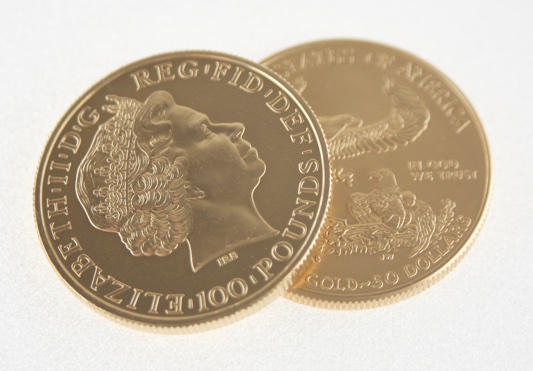
Those who find themselves entering the commemorative gold coin market may be surprised to find that a coin they just paid upwards of £1,000 for, is technically only worth £100. As far as banks are concerned, if you asked them for the full cash value of a British Gold Britannia coin, you’ll be entitled to the amount that the coin says it is worth.
What is the face value?
Luckily, this is only really the case in technicality. Nobody’s ever likely to offer a commemorative coin like the Britannia or a Sovereign as payment for anything, and if you tried to claim its value in a bank they’d probably politely point you in the direction of a gold merchant.
But why is it that commemorative coins used as currency are worth so much less than their equivalent gold or silver content? Here’s a quick trip through the history, tradition and economics that cause this disparity.
Inflation and the £1 Gold Sovereign
Unlike the Britannia, the Gold Sovereign doesn’t have its face value recorded on the actual coin. It is nonetheless officially considered to be worth £1 in British currency. The reason for this is because when the Gold Sovereign was first minted to its current specifications in the early 19th century, the 7.98 grams of gold 22-carat gold that the coin contained would have been worth a pound.
Legislation and later tradition decreed that the coin be minted to the same specifications, meaning the coin is minted now with exactly the same amount of gold as it was in the early 1800s. But of course with the levels of inflation of the 20th century, £1 became worth less and less, meaning this consistent content of gold in the Sovereign got more and more valuable.
International gold bullion coins
Some international gold bullion coins can also find their roots in original currency but their face values do not always match up with history. The American Gold Eagle coin, for instance, has a face value of $50. Eagle was a term used as one of the four main decimal base-units of denomination for US currency in circulation prior to 1933. An eagle coin existed and was given a value of $10.
Other coins such as the Britannia, which were never based on a coin of circulating currency tend to choose a face value for stylistic purposes.
If you want to buy gold coins, be it gold Sovereigns, gold Britannias or the Gold Eagle, you’re likely to pay a lot more than the £1, £100, or $50 they’re technically worth.
When it comes time to sell your gold coins we will offer you a fair price based on the market price for the gold content, not the face value of the coin. So if the gold price increases over the period you own the coin, you’ll be making a hearty profit from it, no matter what it says on the tin.
Have a look at our full range if you want to buy gold coins from The Gold Bullion Company.















